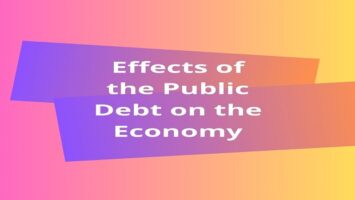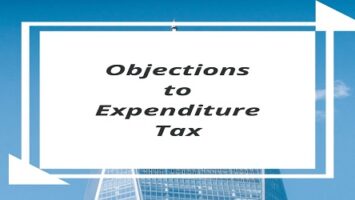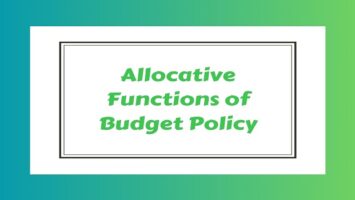Table of Contents
The Normative Theory Of Public Finance:
The revenue expenditure process of a government is traditionally referred to as public finance. However, classical economists consider that the only legitimate function of public finance is the provision of public services, and it was argued that, “The fiscal problem pure and simple” should not be confused with “alien considerations of social and economic policy”. Subsequently, however, most people came to recognize that the revenue expenditure process of government is bound to have social and economic effects. It means public finance is not only a positive science, but it has a normative aspect also. Thus, Prof. Musgrave observed that “while operations of public household involve money flows of receipts and expenditure, the basic problems are not issues of finance. They are not concerned with money, liquidity, or capital markets. Rather, they are problems of resource allocation, the distribution of income, full employment, price level stability, and growth.” It means Prof. Musgrave assigned three important functions to budget policy i.e.
- proper allocation of resources, or the provision of social goods.
- equitable distribution of income and wealth.
- to secure economic stability or full employment.
The task of the normative aspect of public finance is to make an investigation of the principles of those aspects of economic policy that arise in the operations of the physical policy. In other words, the normative aspect of public finance is concerned with the determination of optimum budget policy so that it may perform its three above-mentioned functions efficiently.
Objectives of Budget Policy or Fiscal Policy:
Prof. Musgrave pointed out three important objectives of the optimal budget policy or simply budget policy and the fiscal instruments that should be used to achieve them. They include-
(1) To secure adjustments in the allocation of resources- It implies that the objective of budget policy is to take corrective measures or to adopt regulatory policies to remove imperfections or inefficiencies of the market mechanisms. Besides, the objectives of the budget policy are to make provision for social goods or the process by which total resources are divided between private and social goods, and by which the mix of social goods is chosen. Thus, there are two important parts of the allocative functions of the budget policy- regulatory policies, and provision of social goods. However, both are integral parts of the budget policy but the second part is considered more important than the first.
(2) To secure adjustments in the distribution of income and wealth- It means that the second objective of the budget policy is to make an equitable distribution of income and wealth in conformity with what society considers a ‘fair’ or ‘just’ State of distribution. This may be termed the distribution function of budget policy,
(3) To secure economic stabilization- It means that the third objective of budget policy is to maintain a high level of employment, a reasonable degree of price stability, and an appropriate rate of economic growth, with allowance for effects on trade and on balance payments. These objectives have been termed as the stabilization functions of budget
The above discussion also points out that the performance of a budget policy should be evaluated with reference to the achievements of these objectives. Allocation, distribution, and stabilization are some of the most important aspects of economic policy. Thus budget is treated as a powerful instrument of economic activity.
Allocative Functions of Budget Policy:
The Distribution Function of Budget Policy:
Stabilization Function of Budget Policy:
Coordination of Fiscal Functions:
Conflicts in Objectives of Budget Policy:
Conclusion:
The above analysis reveals that the normative approach of public finance, which assumed the three important functions of the budget policy i.e. allocation, or provision of social goods, distribution, and stabilization, could be coordinated and pursued without interference with one another, is not a realistic description of the fiscal process, but suffers from internal conflicts with one another. Is this analysis considered useless? Obviously, no, it must be understood as a standard against which the actual performance of the budget policy be measured and the quality of existing fiscal institutions be assessed. In other words, the performance of a budget policy is analyzed with respect to these important fiscal functions i.e. allocation, or provision of social goods, distribution, and stabilization. Again, how a budget policy affects the economic policy should be evaluated with reference to these functions.
To put it in the words of Prof. Musgrave, “As we view these potential conflicts, it becomes evident that the normative view of neatly attuned sub-budgets is not a realistic description of the physical process. Rather, it must be understood as a standard against which actual performance may be measured, and the quality of existing physical institutions may be assessed.









Comments (No)